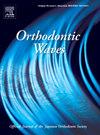Orthodontics and the Pandemic: Long Term Consequences
IF 0.5
Q4 DENTISTRY, ORAL SURGERY & MEDICINE
引用次数: 0
Abstract
ABSTRACT Title Orthodontics and the Pandemic: Long-Term Consequencess Purpose Review of topics related to orthodontics and the COVID19 pandemic. Materials and Methods Originally planned as a Critical Appraisal of select research questions, it became evident there are insufficient studies; rather, this is a comprehensive review of the scientific literature, professional news sources, and lower tier publications. Results The effect of the pandemic on orthodontic private practice and orthodontic education starting in March 2020 was keenly felt as most closed completely or opened for emergencies only. When practices reopened, it was realized that orthodontic care was urgent – patients could not wait for months without continuing their treatment. Orthodontists were confronted with the need to make broad and costly modifications to the way they practiced in a short time. 15 Changes included full personal protective equipment, increased disinfection protocols, airflow considerations, and fewer patients seen with longer appointments and longer workdays. Orthodontic residencies closed for 3 months or more, and like private practices, were forced to make the same changes while trying to ensure residents received the training and experience required to graduate. Fortunately, fifteen months later practices in most countries are 20 returning to normal levels of income and production, albeit at higher costs. Conclusion Changes in infection control, airflow in an office, aerosol generation, and the trend towards intraoral scanning and the contact-less or paperless office are probably permanent. Orthodontists must also be aware of their obligation as health providers interested in the overall well-being of their patients.口腔正畸与大流行病:长期后果
正畸与大流行:长期后果综述正畸与covid - 19大流行相关主题。材料和方法最初计划作为对选定研究问题的批判性评估,很明显研究不足;相反,这是对科学文献、专业新闻来源和较低层次出版物的全面回顾。结果从2020年3月开始,疫情对正畸私人诊所和正畸教育的影响最为明显,大多数诊所完全关闭或仅在紧急情况下开放。当诊所重新开业时,人们意识到正畸护理是紧急的-患者不能等待数月而不继续治疗。正畸医生面临着需要在短时间内对他们的实践方式进行广泛而昂贵的修改。15变化包括全套个人防护装备、增加消毒方案、考虑气流、减少就诊时间和延长工作时间的患者。正畸住院医师关闭3个月或更长时间,就像私人诊所一样,被迫做出同样的改变,同时努力确保住院医师获得毕业所需的培训和经验。幸运的是,15个月后,大多数国家的做法正在恢复到正常的收入和生产水平,尽管成本更高。结论感染控制、办公室气流、气溶胶产生、口腔内扫描和无接触无纸化办公趋势的变化可能是永久性的。正畸医生也必须意识到他们作为健康提供者的义务,对病人的整体健康感兴趣。
本文章由计算机程序翻译,如有差异,请以英文原文为准。
求助全文
约1分钟内获得全文
求助全文
来源期刊

Orthodontic Waves
DENTISTRY, ORAL SURGERY & MEDICINE-
CiteScore
0.40
自引率
0.00%
发文量
0
期刊介绍:
Orthodontic Waves is the official publication of the Japanese Orthodontic Society. The aim of this journal is to foster the advancement of orthodontic research and practice. The journal seeks to publish original articles (i) definitive reports of wide interest to the orthodontic community, (ii) Case Reports and (iii) Short Communications. Research papers stand on the scientific basis of orthodontics. Clinical topics covered include all techniques and approaches to treatment planning. All submissions are subject to peer review.
 求助内容:
求助内容: 应助结果提醒方式:
应助结果提醒方式:


